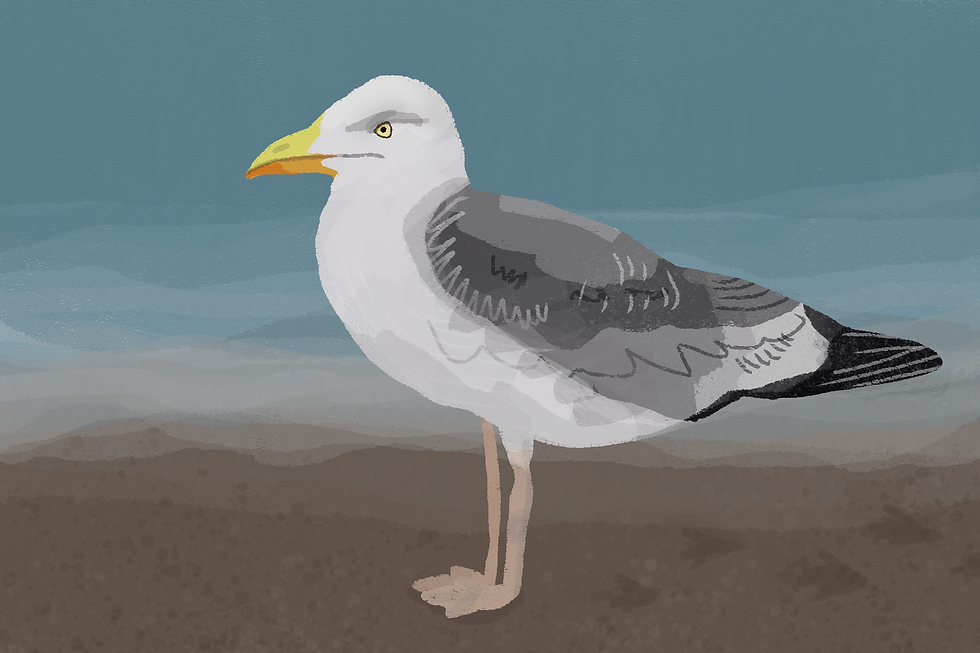Chimney Swift
- Anne Longman
- May 19
- 3 min read
Week of 05.19.25
I discovered this bird as a storm blew through town, and the barometric pressure began to drop. Hundreds of birds flew overhead, chirping and swooping through the clouds of bugs, whose behavior changed in anticipation of the incoming rain.
Most easily identified by their unique shape, these birds are small, sleek, and streamlined, with some people describing their body type as "cigar-like". Chimney swifts spend most of their time airborne, and are designed for flight. They are a grey-blue, with patches of lighter colors near their beak. These birds rarely rest except when sleeping or nesting, and can only hold onto vertical surfaces. Chimney swifts do not rest on perches like most birds - their claws are not designed for it!

These birds are called chimney swifts due to their propensity for nesting on the inner walls of chimney structures. In nature, swifts roost in cliffs, tree hollows, and caves, but found the chimney a suitable replacement in populated areas. The decline of fireplaces in modern architecture has significantly impacted the population of these birds, which conversely boomed when fireplaces served as the main source of heat for many buildings. As gas, forced air and forced water replaced fireplace heat, chimneys lost their utilitarian purpose. Most chimneys built for aesthetics only have screening over the top that prevents these birds from building nests inside. In some areas, chimneys are forgotten in architecture altogether.
This dependency on humans is unique to chimney swifts. "No other species of American bird is so dependent on humans, our homes, and the physical structures we provide." notes president of Wake Audobon Society, Rick LaRose. It's a tough balance - how do you accommodate a bird that adapted to fit human life? Swifts became reliant on chimneys as their natural habitat vanished, and are now being pushed out of human spaces as people do not want birds in their houses. How do you make life suitable for both humans and birds? Conservationists are working to create alternatives. Roosting towers are being built to provide bird-specific accommodations, while homeowners are encouraged to build their own DIY nesting towers in their yard.
Chimney swifts build complex nests similar to cliff swallows, with the help of useful saliva. They use sticks and grasses as building materials, which form into a small, hollow cavity. Their diet consists mainly of airborne bugs, which swifts capture in their gaping mouths.
Despite their nesting behavior, swifts do not handle heat or smoke well. Lighting a fire in a fireplace with swifts can displace or kill their entire brood. If you suspect there are birds in your chimney - please check before roasting chesnuts on an open fire!
Today, we end with a poem from Effie Lee Newsome, a poet renowned for her contributions to the Harlem Rennaisance. She was notably one of the first black poets to publish poetry for children.
He looked like a closed umbrella
Some fairy elf had swung
With the little end turned upward—
That was the way he hung,
Clasping my curtains with all his might,
Quivering like ferns in his funny fright.
He’d dropped from his chimney nursery,
And tried to fly through
My tin kitchen flue.
I heard his wings lash,
And, quick as a flash, I pulled off the tin
And let him fly in.
The new scenes made him quite uncertain,
That’s why he held fast to the curtain
Till I’d unhooked his claws with care
And turned him free to take the air.
Have a great week!
----------------------------------------------------------
Sources:
https://www.audubon.org/news/whats-chimney-swift-without-chimney https://www.audubon.org/news/swift-indeed
Art by Anne Longman




Comments